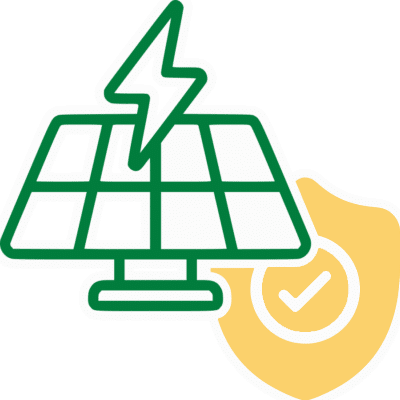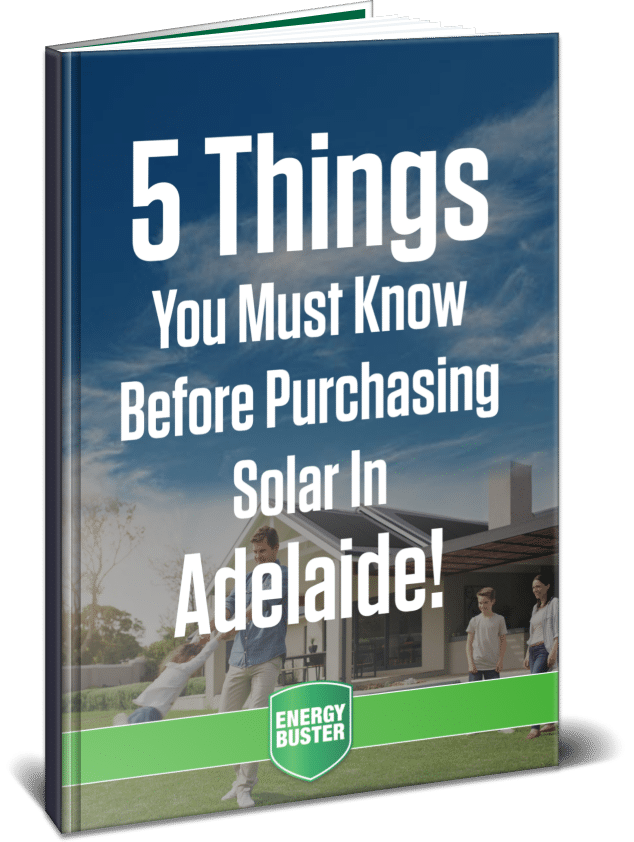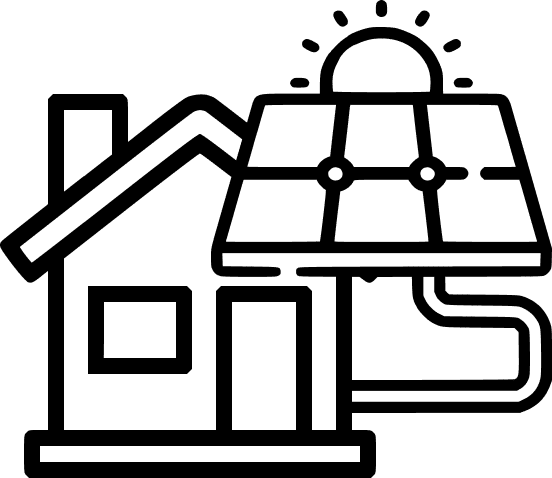
The patented technology used in our solar panels ensures maximized efficiency – even in low light – which means greater savings for our clients year round.

Research shows consumers are 100 times more likely to return a standard panel over a SunPower Panel, a testament to their quality.

The most comprehensive warranties available on the Australian market, with a full 40 Year Warranty and no hidden fine print.
Solar Systems
Optimal 3kW Solar Systems Adelaide
Discover the power of renewable energy with a 3kW solar system for your Adelaide home or business. It’s time to harness the abundant SA sun and enjoy substantial savings on your energy bills.
With over 2500+ installations, we offer a broad range of products such as panels, inverters, batteries, EV chargers and energy storage systems. We are a proud supplier of SunPower panels – both Maxeon and SunPower Performance series, with a 40-year warranty.
At Energy Buster, our expert team in Adelaide will guide you through the installation process, ensuring seamless integration into your property. Contact us today for an obligation-free quote.
Upgrade to sustainable energy with our comprehensive solar panel packages, tailored for efficiency and cost savings.
How do you know if 3kW system is enough?
If you consume less than 10 – 12 kWh per day, a 3kW system should be adequate for your needs. This amount of energy can power basic appliances, lighting, and essential electrical devices.
To determine if a 3kW system is sufficient for your property, you need to assess your energy consumption and consider various factors. Here’s a step-by-step process to help you evaluate:
- Identify your daily and monthly energy consumption: Review your electricity bills from the past year to understand your average daily and monthly energy consumption in kilowatt-hours (kWh).
- Assess Energy Efficiency: Evaluate the energy efficiency by considering factors such as insulation, efficient appliances, LED lighting, and smart energy management practices.
- Analyze Peak Load: Determine your peak energy demand by identifying the highest energy-consuming appliances or activities in your property.
- Evaluate the potential of your location. Factors such as the amount of sunlight, shading from trees or buildings, and the orientation and angle of your roof affect the energy generation.
- Determine Appropriate System Size: Based on your energy consumption data, peak load analysis, and the potential, determine the appropriate system size.
- Evaluate your budget: Evaluate the financial aspects, including the upfront cost, potential savings on electricity bills, available incentives, and payback period.
- Consult with Professionals: Engage with the installers who can assess your specific needs, perform a comprehensive analysis, and provide customized recommendations.
By following this process and seeking professional guidance, you can make an informed decision about whether a 3kW system is enough for your property or if you require a larger system to meet your energy needs.
Selecting the right system size depends on your budget, available roof space, electricity use and future energy plans.

How much space will 3kW solar system take?
The space required for a 3kW system depends on the type of panels used and their efficiency. On average, a 3kW solar system may require approximately 18-28 square meters of roof space.
If we consider panels with an average wattage of 300W, you would need approximately 10 panels to achieve a total capacity of 3kW.
The physical dimensions of panels can also vary, but as a rough estimate, each panel may measure around 165 cm by 99 cm.
Keep in mind that these are approximate values, and the actual dimensions and number of panels required can vary based on the specific brand and model of panels chosen.
Understanding your 3kW system options
In Adelaide, there are several types that are considered among the best. Here are a few options:
Monocrystalline Panels
Known for their high efficiency and sleek appearance, monocrystalline panels are a popular choice. They have a uniform black colour and offer excellent performance, especially in areas with limited roof space.
Monocrystalline panels are perfect for residential, commercial, and off-grid properties where high efficiency and limited space are important factors.
Polycrystalline Panels
Polycrystalline panels are cost-effective and provide good performance in various weather conditions. While they may be slightly less efficient than monocrystalline panels, they are a reliable option for Adelaide’s climate. They’re also built by using forced labour in China.
Polycrystalline panels are perfect for budget-conscious residential and commercial projects with ample available space for installation.
Hybrid Systems
Hybrid systems combine panels with energy storage capabilities, allowing you to store excess energy for use during peak demand or at night. These systems provide greater energy independence and can further reduce your reliance on the grid.
Hybrid systems are ideal for off-grid applications or areas with unreliable grid access, where a combination of renewable power and energy storage is needed to ensure a consistent and reliable electricity supply.
Smart Systems
Some 3kW systems come equipped with smart monitoring and management features. These systems allow you to track your energy production and consumption in real time, providing valuable insights and optimising your energy usage.
Smart systems are ideal for tech-savvy users and those seeking advanced monitoring, optimization, and control features to maximize energy efficiency and manage their power generation effectively.
What factors affect a 3kW solar system cost?
The cost can vary depending on several factors such as the quality of the components, installation complexity, and any additional features or services.
Additionally, keep in mind that there might be government incentives, rebates, or financing options available that can help reduce the upfront cost of installing a system. It’s worth exploring these options to maximise the financial benefits of going with renewable energy.
3kW system benefits







What is the installation process for a 3kW system?
The installation process generally involves the following steps:
Step One: Consultation and Assessment
Contact a reputable installer in Adelaide to schedule an initial consultation. During this stage, they will assess your energy needs, evaluate your property’s potential, and discuss any specific requirements or preferences you may have.
Step Two: Design and Proposal
Based on the assessment, the installer will design a system that meets your energy goals and fits your property. They will provide a detailed proposal outlining the system specifications, costs, expected energy production, and potential savings.
Step Three: Financing and Permits
If needed, you can explore financing options and incentives to help with the upfront costs. The installer will assist you in understanding and applying for any available rebates or financing programs. They will also handle the necessary permits and paperwork required for the installation.
Step Four: Installation Date and Preparations
Once the proposal is approved, a date will be set for the installation. Before the installation day, ensure that the roof is clear of any obstacles or debris and that the electrical system is ready to accommodate the system.
Step Five: System Installation
On the scheduled day, the installation team will arrive at your property. They will mount the panels on the roof or other suitable areas, install the inverters and wiring, and connect the system to your electrical panel.
Step Six: Inspection and Connection
After the installation, an electrical inspector may visit to ensure the system meets safety and compliance standards. Once the system passes inspection, your installer will arrange for the connection to the grid and utility company.
Step Seven: System Activation and Monitoring
With the system connected, your installer will help you activate and start monitoring the performance of your 3kW system. They may provide you with access to a monitoring platform where you can track energy production and savings.
If you think that purchasing panels is the right thing for you, then the next step is to decide on the best brand and system size. Get in touch with us by either calling us on (08) 7120 6377 or by filling out our fast free quote form.























































